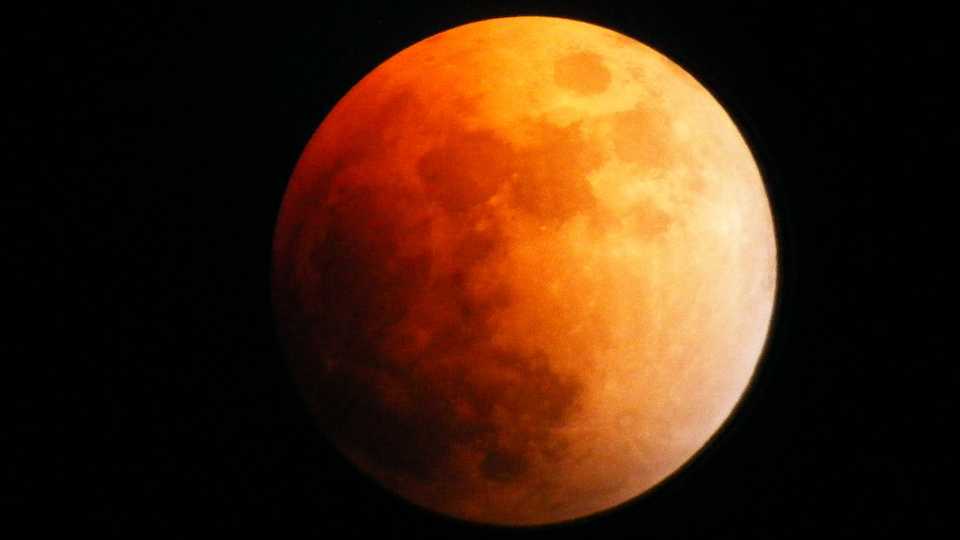Each month, renowned astronomers share their latest research at Morrison Planetarium.
Universe Update
Full Moon Fever

You may have heard that a “blue moon” is occurring Wednesday, January 31. First off, that “blue moon” is just a name—the Moon doesn’t really turn blue! In fact, thanks to a total lunar eclipse taking place this Wednesday, the Moon will likely turn a completely different color…
So first off, what is a “blue moon”? Generally, the term refers to any exceedingly rare event (as in “once in a…”), but many people specifically apply it to the occurrence of a second full moon in a calendar month, such as those happening this year in January and March. However, as it turns out, that particular, common meaning is based on a misinterpretation by a magazine writer who defined a blue moon that way in 1946. Up until that writer’s error, editions of the Maine Farmer’s Almanac dating to 1819 defined a “blue moon” as the third of four full moons in a single season (which is even more rare than two-in-one-month). For this to happen, a full moon would need to occur very soon after the beginning of a season so that three more lunar phase cycles can be completed before the end of the season. That doesn’t happen again until May 2019.
Well, actually...
Another full moon fun fact: With two full moons each in January and March, no full moon occurs in February. This is purely a matter of how natural events occasionally line up with our calendar, and are not necessarily reflective of some anomaly in the natural order. However, upon learning that this circumstance occurred in 1866, Santa Rosa-born cartoonist Robert Ripley of “Believe It or Not!” fame sensationalized it to imply that the Moon wasn’t seen at all during the entire month! In 1929, he published a drawing captioned, “The Month without a Moon!” It depicting a terrified couple looking around in a forest—causing one to wonder if they were supposed to find the Moon hiding behind a tree? Of course, the caption should’ve read “The Month without a Full Moon,” since the Moon was certainly seen in all of its other phases. Ripley also added that this wouldn’t happen again for another 2.5 million years. He was a little bit off about that, too—this January will be the fifth such occurrence since he wrote about it in 1929 (depending on the time zone of the observer).
Now, about that lunar eclipse! The January 31 full moon passes through Earth’s shadow, turning a coppery, reddish color (because of light scattered by Earth’s atmosphere) in a total lunar eclipse. This characteristic color prompted ancient observers to think that the Moon was being bloodied by an attack… but luckily, it always recovered. For those of us on the U.S. west coast, look for totality on Wednesday morning, when the Moon will be centered over the western Pacific Ocean and visible along the Pacific Rim. But get up early! For San Francisco, the partial eclipse (when the Moon enters the dark part of Earth’s shadow) begins at 2:51 a.m. PST, with totality (when the Moon is completely immersed in the shadow) at 4:51 a.m. PST. Between those times, notice the curvature of Earth’s shadow—something that can easily be seen during the partial phase of any total lunar eclipse, no matter what direction sunlight is coming from. Greek scholars concluded thousands of years ago that this simple observation proves that Earth is a sphere, since that’s the only shape that casts a round shadow in all directions.
The next total lunar eclipse visible from the United States will occur on January 20-21, 2019, centered directly over North and South America.